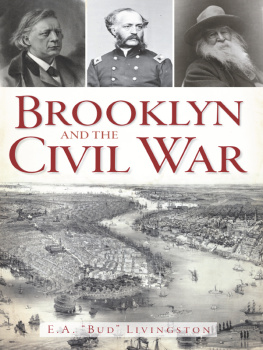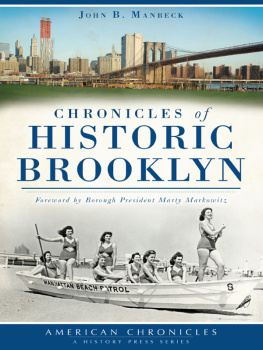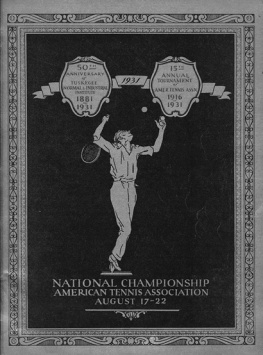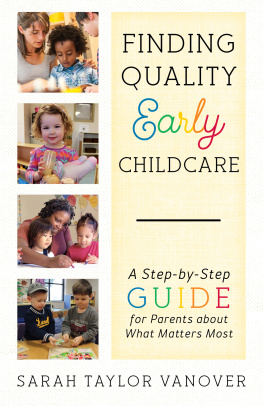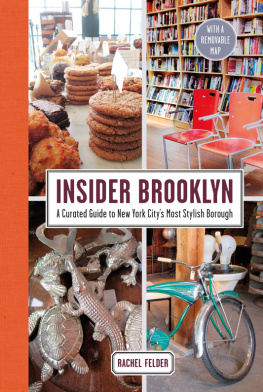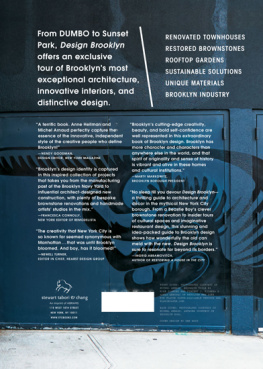Thank you for buying this ebook, published by NYU Press.
Sign up for our e-newsletters to receive information about forthcoming books, special discounts, and more!
Sign Up!
About NYU Press
A publisher of original scholarship since its founding in 1916, New York University Press Produces more than 100 new books each year, with a backlist of 3,000 titles in print. Working across the humanities and social sciences, NYU Press has award-winning lists in sociology, law, cultural and American studies, religion, American history, anthropology, politics, criminology, media and communication, literary studies, and psychology.
Raising Brooklyn
NEW YORK UNIVERSITY PRESS
New York and London
www.nyupress.org
2011 by New York University
All rights reserved
We gratefully acknowledge the Feminist Press of the City University of New York for permission to reprint material that appeared in WSQ: Womens Studies Quarterly, Mothers in the Field: How Motherhood Shapes Fieldwork and Researcher-Subject Relations, Vol. 37, 2009.
References to Internet websites (URLs) were accurate at the time of writing. Neither the author nor New York University Press is responsible for URLs that may have expired or changed since the manuscript was prepared.
Library of Congress Cataloging-in-Publication Data
Brown, Tamara Mose.
Raising Brooklyn : nannies, childcare, and Caribbeans creating community/
Tamara Mose Brown.
p. cm.
Includes bibliographical references and index.
ISBN 9780814791424 (cl : alk. paper) ISBN 9780814791431
(pb : alk. paper) ISBN 9780814709351 (e-book)
1. NanniesNew York (State)Brooklyn. 2. Public spacesNew York
(State)Brooklyn. 3. West IndiansNew York (State)Brooklyn. I. Title.
HQ778.67.N7B76 2010
302.34089960729dc22 2010033741
New York University Press books are printed on acid-free paper, and their binding materials are chosen for strength and durability. We strive to use environmentally responsible suppliers and materials to the greatest extent possible in publishing our books.
Manufactured in the United States of America
c 10 9 8 7 6 5 4 3 2 1
p 10 9 8 7 6 5 4 3 2 1
Contents
The Neighborhood
Surveillance and the Creation of Communities
How Food Creates Community
Cell Phones, Technology, and Childcare
How Susus Bridge the Financial Gap
The Case of Domestic Workers United
Preface
My desire to understand how paid childcare providers use public places emerged from my experience as a scholar suddenly plunged into motherhood. While not a paid childcare provider, I am a mother of two toddlers and have spent many hours of many days in public places while caring for children. After giving birth to my first child, a daughter, in 2004, I began gravitating to the public park three blocks from the apartment that my husband and I rented because I had been socialized to believe that that is what you do when youre a new mother. Even though my daughter was far too young to appreciate the playground activities made available to her, I continued visiting the park on a daily basis (twice a day once my son was born a year later) to break the monotony of days filled with graduate coursework, diaper changing, multiple feedings, and hours of talking to this little creature who could only stare back at me and gesture. At first, it did not strike me as odd that some park users were either adult Latina or Filipina caregivers with small white children, since I had just come from Los Angeles, where this was a familiar sight. Once I became a regular Brooklyn park user, however, I was intrigued by the familiar West Indian accents I heard from the many black women caregivers using public parks. I recognized those accents, for I had grown up in a Trinidadian immigrant household in Canada with a father of African, Indian, English, and Irish ancestry and a mother of African, Indian, Carib, Spanish, and French ancestry. Both identify as mixed race, as do I, but having lived in the United States for the past nine years, I am racially identified as black, as are my childrensimilar to the caregivers I encountered.
After frequenting the parks for some weeks, I began to notice that these Caribbean-born women and their charges were, in fact, the primary users of this park during weekdays. Although I had lived in the area for over a year before my first park visit, I realized I had never seen any of these women living in the neighborhood. I wondered where these women lived and why they came to these parks in such large numbers to take care of children whom I assumed to be other peoples, an assumption I later found to be correct. After all, I had found an Italian American part-time babysitter who lived in a brownstone building where she had been raised next door to the brownstone my family was renting at the time. Would there not be enough babysitters available in the neighborhood that families could call on? Further, I questioned the reasoning of having a West Indian babysitter who might bring a different ethos to a home and to a public park that was generally not in a West Indian community. Other questions came to mind: Were these women comfortable working in a predominantly white neighborhood? Did they feel safe there? Did they socialize with other West Indians, seeking refuge in their own culture during the workday? After asking myself these questions, I decided I had to investigate.
I began to see that the use of public places by West Indian childcare providers was related to matters of race, ethnicity, immigration, political economy, and transnational motherhood. Further, my research led me to topics involving care, culture, globalization and its effects, and issues of urban gentrification.
As I encountered West Indian childcare providers over a three-year span in public places, discussed everyday activities and shared food with them, or simply allowed my children to play with their charges, I became more aware of the significance of West Indian childcare providers frequenting of public parks. Something more than simply getting out of the house and going to the parks with their children brought these women to such public places in neighborhoods that otherwise they might find unwelcoming. They were creating a distinct community to make their workweek more manageable. I then discovered that most of these sitters or nannies, as they call themselves, lived near Flatbush Avenue, one of the major West Indian ethnic enclaves and shopping districts in Brooklyn, which was at most seven major street blocks away from the area in which their employers lived. This fact awakened me to the role of gentrification in the employment of these women.
Simple walks down the street with West Indian babysitters in a gentrifying Brooklyn neighborhood slowly turned into note-taking events, interviews, and observations of social networks being developed. In this book, I provide insights into a social world that has been written about extensively, but without reference to the human relations that babysitters form to help stave off some of the frequently noted isolation felt among paid childcare providers.
Through this lens I developed an appreciation for the women I studied as they worked long hours in what appeared to be a community of culture. These childcare providers appeared to enjoy their jobs more when they had opportunities to express their culture during their workday. They measured their job performance, not by some standard given to them by their employers but by the cultural standards set within the West Indian enclave, a standpoint that ultimately allowed them to assert their own autonomy. Spending time at the park with my own children throughout this period and seeing the multiple ways West Indian childcare providers got through the workday helped me to reconnect with my own culture and changed my life in ways that go beyond this book.


